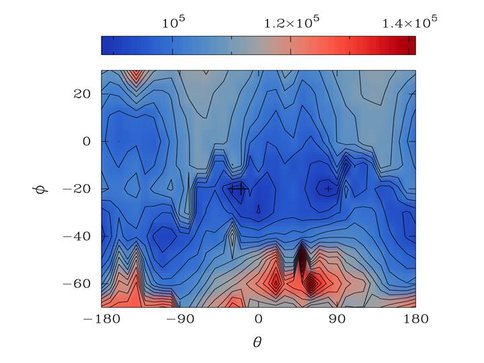2012 Annual Science Report
 University of Hawaii, Manoa
Reporting | SEP 2011 – AUG 2012
University of Hawaii, Manoa
Reporting | SEP 2011 – AUG 2012
Forces Important for Astrobiology: Collisions and Sublimation in the Main Belt
Project Summary
In the Asteroid Belt, we sometimes observe different varieties of sudden, transient activity. One of these varieties of activity, sublimation tails associated with Main Belt Comets (MBCs), indicates the presence of a new reservoir of water inside the habitable zone, and is a major research subject of UHNAI. Other forms of activity, like collisions, can mimic MBCs. We have been working to develop computational models to distinguish between collisions and comet-like sublimation. In the course of this work, we have performed the first known numerical fit of a past Solar System impact event, demonstrating, from a months old debris trail, that the “comet” P/2010 A2 is really an impact, and constraining the impactor’s direction.
Project Progress
In 2010, the asteroid P/2010 A2 was observed to have a dust and debris trail, suggesting either cometary activity (an MBC) or a collision. To determine whether this event was an MBC or an impact, we developed two novel, mathematical methods to describe the debris field, one a simple binary, envelope fit and the other a more complex multiparametric method. Both methods showed that P2010/A2 could be explained with an instantaneous cone in a particular direction (Fig. 1), with a half—opening angle of 40 degrees, agreeing well with models and experiments of impacts. Moreover, we demonstrated that it is likely that A2 has a dusty surface rather than a solid one, and produced models that reproduced some of the most salient features. Fig. 2 shows our simple model, compared to an HST archive image of the debris around P/2010 A2, with the various observational features explained through line-of-sight brightening of a conical geometry. This work resulted in the publication of two papers.
Our models will be useful in interpreting future tail detections found in the main belt, in our ongoing search for cometary activity in the Main Belt.
Using debris distributions from hydrodynamic collision models run by B.H., we are further developing our techniques. Our preliminary finding is that we are able to discern not only the arrival direction of an impactor, but also, by fitting the asymmetries of the ejecta, the angle at which it strikes the target body.
Penalty function (similar to likelihood) contours in target body latitude Φ and longitude θ, illustrating that the debris trail from P/2010 A2 is best fit with a conical ejecta cone, with the impactor coming from one of two observationally degenerate directions (darkest blue regions).
Appearance of the P/2010 A2 impact event compared to our simplified model, showing how a conical debris distribution viewed in projection can recreate various curved bright features.
-
PROJECT INVESTIGATORS:
-
PROJECT MEMBERS:
Jan Kleyna
Project Investigator
Karen Meech
Co-Investigator
Olivier Hainaut
Collaborator
Jan Amend
Postdoc
Brendan Hermalyn
Postdoc
-
RELATED OBJECTIVES:
Objective 1.1
Formation and evolution of habitable planets.
Objective 4.3
Effects of extraterrestrial events upon the biosphere

